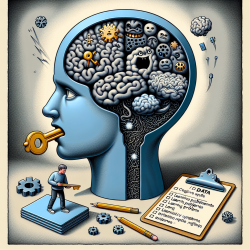Storytelling is more than just an art; it is a powerful tool for understanding and communicating complex emotions and experiences. For children with Autism Spectrum Disorder (ASD), storytelling can reveal much about their emotional states and the challenges they face. A recent study titled "Story contents and intensity of the anxious symptomatology in children and adolescents with Autism Spectrum Disorder" provides valuable insights into how narratives can be used to better understand and support these children.
The Study at a Glance
The research conducted by Iandolo et al. (2020) aimed to compare the storytelling abilities of children with ASD to those with typical development. Using the Bears Family Projective Test, the study analyzed the narratives of 25 children with ASD against 25 typically developing peers. The results highlighted significant differences in the content of stories between the two groups, particularly in terms of adaptive and maladaptive behaviors and the presence of anxiety-related themes.
Key Findings and Implications for Practitioners
- Adaptive and Maladaptive Behaviors: The narratives of children with ASD often contained more instances of adaptive and maladaptive behaviors compared to their peers. This suggests that their stories reflect internal struggles and coping mechanisms that are crucial for practitioners to understand.
- Anxiety Indicators: The study found a correlation between story content and anxiety symptoms. Practitioners can use storytelling as a diagnostic tool to identify anxiety levels in children with ASD, enabling targeted interventions.
- Narrative Therapy Potential: Given the link between story content and emotional states, narrative therapy could be an effective approach for helping children with ASD externalize emotions and develop self-regulation skills. Techniques such as externalization can empower children to articulate their experiences and explore solutions.
Applying Research Outcomes in Practice
Practitioners working with children with ASD can leverage these findings by incorporating storytelling into their therapeutic practices. Here are some strategies:
- Create Safe Storytelling Environments: Encourage children to share stories in a supportive setting where they feel comfortable expressing themselves without judgment.
- Use Narrative Therapy Techniques: Employ techniques such as externalization to help children articulate their emotions and identify problem-solving strategies.
- Monitor Story Content for Anxiety Indicators: Pay attention to recurring themes or patterns in stories that may indicate underlying anxiety or emotional distress.
The insights from this study underscore the importance of narrative skills in understanding the emotional landscape of children with ASD. By integrating storytelling into therapeutic practices, practitioners can gain a deeper understanding of their clients' experiences and provide more effective support.
To read the original research paper, please follow this link: Story contents and intensity of the anxious symptomatology in children and adolescents with Autism Spectrum Disorder.










